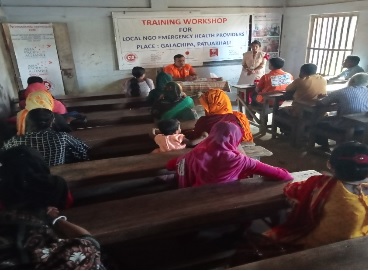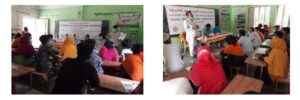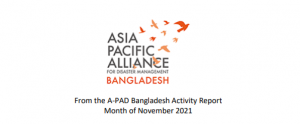
A-PAD Bangladesh Activity Report Month of July 2022
.
Project Title: Capacity Building Project for the Establishment and Sustainable Management of a Multi-Sector Platform for Disaster Management in Bangladesh
Project Period: 17 January, 2022 – 16 January, 2023 (12 month)
- Project Activities and Accomplishments
Bangladesh is one of the hazardprone countries in South Asia. Floods, droughts, landslides, thunderstorms, hurricanes and cyclones occur regularly. Among these earthquakes, floods and drought risk are extremely high. These hazards threaten millions of lives and cause large scale financial, infrastructure, agriculture and productivity losses that seriously hinder Bangladesh’s overall development. Bangladesh has limited resources and lack their own disaster management plans. Considering these problems, this paper attempts to throw light on a more integrated and responsive disaster management system in Bangladesh. Disaster Management approaches in Bangladesh harmonizing systematic inquiry of Disaster Management in Bangladesh is not well conversant in the available literature. Moreover, this approach taken from different programs at national, international and community level, which is not redeveloped, aligned with the field experiences and theoretical viewpoint.
A-PAD Bangladesh started project from January 2020 and presently continue it 17 January 2022 to build up capacity on disaster management. It communicate with the different sectors like local community, community leaders, stakeholders, GOVT. officials continuing training on disaster management. To hold training program A-PAD Bangladesh staff organized small community meeting to sharing ideas on disaster and introduced them about A-PAD Bangladesh activity. A-PAD Bangladesh working 7 divisions in last years.
There are 2 health workers in each divisions whose are doing home visit and aware the local community about basic disaster awareness. The health workers gave basic ideas about disaster management. A-PAD Bangladesh working at the rural areas. If there would be any directions or announcement from GOVT. or any disaster related news has been published the health workers delivered the message to the local community. Like Bangladesh GOVT. started vaccination program which many people did not know and some people did not interested about taking vaccine. So that the health worker visited different areas to give message about the vaccination program. Total 5,455persons were benefited from A-PAD Bangladesh on July 2022.
A-PAD Bangladesh attended coordination meeting at the 7 divisions in Office of Deputy Commissioner. At that meeting different NGOs had joined and explained their activities. Besides this what will be the next activities of the GOVT. and NGOs were discussed at that meeting.
1. To manage the emergency disaster management coordination centers in disaster-prone areas (Outcome 1) The disaster management coordination center in disaster vulnerable areas established in this project (3 year project) functions as a disaster response base in each region, and contributes for preventing the spread of health damage to local residents and community-led disaster risk reduction measures. | ||
Activities | Outcome Indicators to Measure Results: | Project Status: Achievements vs Outcome: If the activity is behind the schedule, please write the reason. |
1-1 Utilization of Emergency Disaster Management Co-ordination Center Beneficiaries: 10 persons x 25 days x 7 divisions x 12 months = 21,000 persons (Monthly Goal: 10 persons x 25 days x 7 divisions = 1,750 persons) | 【Indicators of Outcome】 1-1: The disaster management coordination center is used for coordination meetings among partner organizations and stakeholders in normal times. It will also serve as a base for health and public health guidance for localresidents. In an emergency, emergency health personnel provide health services.21,000 local residents (annual average) in the target district use the disaster response management center or receive health services. (Indicator: number of visitors, record of services provided)
1-2: Covid-19 testing lab will prevent the spread of Covid-19 infections by conducting tests. More than 9,000 Covid-19 tests will be performed and the spread of infection is reduced by dealing with residents with symptoms and those who have no symptoms but are infected nearby and are worried about infection. (Indicator: number of tests, report of test results)
| Total 3,430 people visited to the Disaster Management Coordination Center to discuss about disaster preparedness and health related issues. Dhaka: 580 Persons Cox’s Bazar: 600 Persons Pabna: 500 Persons Bagerhat: 400 Persons Patuakhali: 500 Persons Habiganj: 420 Persons Rangpur: 430 Persons Total = 3,430 Persons
|
1-2 COVID-19 awareness program in 7 divisional areas Beneficiaries:25 participants x 4 sessions x 7 divisions = 700 participants |
| |
1-3 Establish quality lab facilities to identify the COVID-19 cases Beneficiaries: 30 persons x 25 days x 12 months = 9,000 persons (Monthly Goal: 30 persons x 25 days = 750 persons) | A-PAD Bangladesh established PCR Lab for COVID-19 test. In Bangladesh number of COVID-19 patients has average in number. In July 2022 total 850 COVID-19 test has been done | |
2. To establish and strengthen the NPF Partner network (Outcome 2) A-PAD BGD, NPF for disaster reduction and disaster response through collaboration between multi-sectors, will be established and expanded, and the disaster prevention and disaster capacity of its member organizations will be strengthened. | ||
2-1 Self-assessment of networking member organization | 【Indicators of Outcome】 2-1 NPF partner organizations carry out self-assessment, and the resources of each organization are digitized. Self-assessment clarifies partner roles, responsibilities, abilities, and interests. (Indicator: List and data of resources owned by each organization)
2-2 The “Strategic Plan for Disaster Prevention, Disaster Preparation, Disaster Response, and Restoration in each district” discussed at the Strategic Meeting will be formulated, and a framework for disaster prevention cooperation will be established. (Indicator: Strategic Plan)
2-3 More than 5 organizations from new partnerships with NPF A-PAD BGD annually to expand the NPF network. (Indicator: number of new MOUs signed for 3 years)
2-4 Resources possessed by A-PAD BGD partner organizations are provided in emergency disaster response, and play the role of that organization in an emergency. (Indicator: Lists of resources such as supplies, people and donations provided by partner organizations fora three-year emergency disaster response) | Results of the Self-assessment Required document; – List of resources such as supplies, people and donations provided by partner organizations for a three-year emergency disaster response
|
2-2 Strategic Planning Network Meeting Participants:100 persons x 5 villages x 7 divisions = 3500 participants
| A-PAD Bangladesh conducted strategic planning network meeting at 2 divisional areas. 20-07-2022,Khaleya, Total Participants 100 21-07-2022, Haridebpur, Total Participants 100 23-07-2022, Mominpur, Total Participants 100 24-07-2022, Chandanpat, Total Participants 100 25-07-2022, Sadwapuskorni, Total Participants 100 24-07-2022, Gopaya, Total Participants 100 25-07-2022, ChotoBhula, Total Participants 100 26-07-2022, Richi, Total Participants 100 27-07-2022, Poil, Total Participants 100 28-07-2022, East Vadoy, Total participants 100 Strategic planning is a production process. The output of the planning process is a plan. A plan is a formulated and a detailed method by which a thing is to be done. The plan that results from the planning process details the interventions that must be implemented and the respective goals and some of the objectives that must be accomplished to meet the identified needs. It also defines the priorities, sequencing, and timeframes over which each of the goals should be achieved. In order to identify possible critical points of success or failure in the planning process, the planning process has been deconstructed into its components. Strategic planning to meet the defined needs requires synthesis of numerous factors.The planning process is complex and requires expertise for the integration of each of the factors outlined and discussed. The resulting strategic plan lays down the overarching goals and major objectives for which the intervention will be selected. Any initiative, regardless of whether it is part of improving the preparedness of a society or, in case of disasters, consists of immediate urgent actions, should be preceded by an assessment and appropriate, inclusive coordination.
Strategic planning network meeting conducted at the 5 villages in Habiganj. The Meeting of Community Initiative Society (CIS) on Strategic Planning Networking Meeting was organized with the participation of Local Government Authorities, NGO representatives, community leaders and People’s Committees who are directly involved in Disaster Risk Management processes. Habiganj suffers significantly increasing climate extremes in recent years with complicated occurrences of flash floods, long term-flood and other extreme events. Although Habiganj has been active in implementing Climate Change Adaptation and Disaster Risk Reduction initiatives at all levels, Loss and Damage still occur and severely affect vulnerable communities, especially remote communities. Recognizing the risk of dealing with unavoidable Loss and Damage, the District Administration collaborates with NGOs to develop a series of capacity-building activities, including training, to establish a comprehensive linkage between national agencies and local communities in a response to immediate impacts of disasters while ensuring a sustainable foundation of knowledge and knowledge transfer to effectively reduce long-term impacts of Disaster. The purpose of a strategic planning network meeting is to share an idea to create a plan for Disaster Management. In doing so, strategic planning is designed to surface and address any factor or issue which is the key to successful Disaster Management. The Framework sets out the topics of the Strategic Planning Networking Meeting, which was discus in the meeting DRM is a multisectoral activity that must be part of the coordination within the national planning process of the various parties involved. It rests on five pillars: a. Risk identification b. Risk reduction c. Preparedness d. Financial protection e. Resilient recovery.
| |
2-3 Networking partners DRR Training Participants:25 persons x 2 org x 7 divisions x 2 times = 700 participants
|
| |
27-28 Increase NPF members and maintain partnership
| Number of new NPF member organization, number of new MOUs signed for 3 years
| |
27-29 International Symposium on DRR
Participants:200 persons | Questionaries about the symposium Required Document; Symposium Report | |
3. distriTo strengthen the local capacity for emergency response and disaster risk reduction (Outcome 3) The knowledge and abilities of human resources involved in disaster prevention and disaster response will be improved in disastervulnerable areas, contributing to the strengthening of disaster response capacity building of local communities. | ||
3-1 a) Workshop on Disaster Management and Emergency Health Program
Participants:50 persons x 7 divisions x 2 times = 700 persons | 【Indicator of Outcome】 3-1 a) Build a network of community leaders who can lead disaster response and emergency health response in all districts in Bangladesh. (Indicator: number of community leaders who can lead emergency response, list of community leaders for disaster response/emergency health in all 7 districts. (3 years))
b) Network of human resources with skills and know-how to health response in an emergency will be established in all districts in Bangladesh to provide health services to local residents in an emergency.(Indicator: data of 25 NGO health response personals who can respond in an emergency, cases of activities during an emergency disaster in all districts, and the number of residents provided with services (3 years))
3-2 Disaster information and emergency response records are accumulated as a disaster archive. In addition, the activities and results of this project of A-PAD BGD will be introduced at international symposiums, internationalorganizations, and domestic and foreign media. (Indicator: situation report at the time of disaster, number of activity reports posted on A-PAD BGD website, international symposium report, introductory article) | Three days training workshop sad been done in the 2 divisional areas where 50 participants from each divisions had joined. 05-07July 2022, Dhaka, Total Participants 50 23-25 July 2022, Pabna, Total Participants 50 Disaster management is a multidisciplinary activity involving a number of a number of Departments, stakeholders, NGOs spanning across all sectors of development. Where a number of Departments are involved, A National policy on disaster management has been drafted, and is in the process of consultations. In the line with the changed focus, the policy proposes to integrate disaster mitigation into development planning. The broad objective of the policy are to minimize the loss of lives and social, private and community assets because of natural or man-made disasters and contribute to sustainable development and better standards of living for all, more specifically for the poor and vulnerable section by ensuring that the developments gains are not lost through natural disaster. 3 days training program conducted at Dhaka where it was discussed about the health, nutrition, woman health problem facing and action to be taken during and after disaster.
3 days workshop conducted at Pabna which is the north side of Bangladesh where 50 participants were presented. The Bangladesh National Plan for Disaster Management is a strategic document to be effective for a certain period of time. The Disaster Management and Relief Division (DM&RD) being the focal ministry for disaster risk reduction and emergency management will take the lead role in disaster risk reduction and emergency management planning. Additionally, there will be a few hazard specific management plans, such as Flood Management Plan, Cyclone and Storm Surge and Tsunami Management Plan, Earthquake Management Plan, Drought Management Plan, River Erosion Management Plan, etc. Moreover, there will be a detailed Disaster Management Plan for each District, Upazila, Union and Pourashava and City Corporation of the country.
|
3-1 b) Local NGO Emergency Health providers training
Participants:25 pers/time x 7 divisions = 175 persons | CIS conducted 5 days training program at Galachipa where 25 participants had joined the Local NGO Emergency Health Provider Training. 17-21July 2022, Galachipa, Total Participants 25 Patuakhali is one of the disaster-prone areas and the main disasters in that area are cyclones, tidal floods, and erratic rainfall, the main focus of the training workshop was on building up capacity for emergency Health response during and after a disaster. A total of 25participants from Different organizations and the Local community joined that training workshop. The people face the problems of lack of pure drinking water, and medical facilities and most of the people do not know about First Aid. Every day our trainer provides the trainees with realistic ideas about First Aid. The training was conducted for Five days focusing on different topics. The main focus of the training was Emergency Health to build Social awareness, basic hygiene and sanitization to prevent Corona Virus. On the first day of the training program, Sajial Chandra Roy discussed how we can stay fit and First Aid Treatment. For Example Temperature, fracture, Burn, Snake bites, & physical exercise, drinking enough water, sleep like quantity and time.on the 2nd day, Shah AlamMridha discussed water-related diseases. At present many children are suffering from diarrhea, fever and cold which is more seasonal. On 3rd day the topic was accidental cut treatment. cut Injury In case of Unintentional cut or Accidental cut. the cut should be pressed to stop the Bleeding and the Profession must be stopped with clean clothes so that blood does not flow. During the 4th day of the training program, the topic was establishing a relationship with communities. At the 5th days the training programs focused on the emergency health services
| |
3-2 Seminar for Developing public-private partnership innovation success models
Participants:50persons x 7divisions x 2times =700participant | A-PAD Bangladesh conducted public private partnership seminar at Cox’s Bazar. 50 participants had joined in each division. 14July 2022, Cox’s Bazar, Total Participants 50
Seminar on Public Private Partnership Innovation Success Model conducted in the district of Cox’s Bazar Sadar. The Seminar was attended by Govt. and non-Govt. Employees and people of different professions. To provide proper information, tools and instruments that will enrich the overall awareness and understanding of Disaster Risk Management in general among the local community. Administration officer Md. Nazim Uddin said Public Private Partnership such kind of seminars can enhance mitigation, preparedness, emergency prevention, response and recovery efforts through cross-sector education, training, technical assistance and interdependency exercises. The concern of Public and Private sector areas can supplement individual and joint emergency preparedness efforts by improving partners’ understanding of vulnerabilities, threats and capabilities. Program Co-ordinatorMujibulHaq Chowdhury added that Public Private sectors can come forward to work collaboratively and can learn from each other’s experience in the prevention, response, planning, mitigation and recovery phases as well. Sharing ideas and best practices improves response efforts by preventing repeated mistakes and identifying avenues for better cooperation. The Govt. officer emphasized the current disaster events in Bangladesh at the Seminars and discussed what preparation can be taken for the early disaster so that it will help to reduce the loss of lives. Further Many Fishermen fall in the storm because of unaware the early warning systems every year. Another most important issue was the lack of safe drinking water in during the summer and rainy seasons. During the summer season, the safe drinking water level goes down so it becomes tough to collect safe drinking water. It would not be possible to make RSF because the river water is excessive salinity. At that Seminar, it was discussed making Rain Water Harvesting make it drinkable which will help the community to solve the safe drinking water issue. Both Public and Private sectors agreed that emergency prevention, preparedness, response and recovery efforts are benefitted by extending training on preparedness to private sector employees. The public sector gains a better-informed and prepared workforce that is ready to respond both at private sector facilities and within the community at large. Employee training also helps to raise awareness within a private sector organization of emergency plans and procedures, potentially reducing the impact of incidents on Personnel, assets and operations. At the seminars Local community, community leaders, stakeholders and Govt. officials build their capacity for disaster management and work collaboratively during and after a disaster.
| |
3-3 Update website contents as E-resources for Disaster Management |
https://apad-bd.org/disaster-situation-analysis-report/ | |
- Challenges
- Practice in collaborationwithA-PAD Bangladesh Network Partners
Please writegood practice in collaboration with partner organizations
- Any contributionFunds Received and Grants Applied / Planned and Implemented Projects by CIS including Emergency Response
Please write Projects name and its fund resources
- Relationship with Bangladesh Government and Japanese Embassy
Please write aboutMeeting with Government officials
Strategic Planning Network Meeting-Rangpur

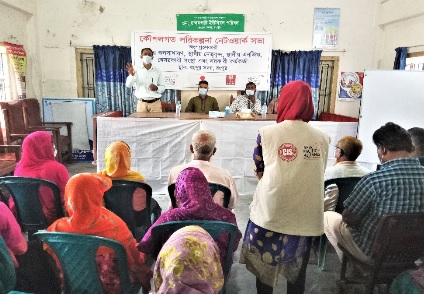


Strategic Planning Network Meeting-Habiganj
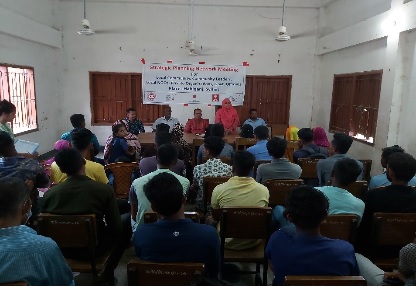
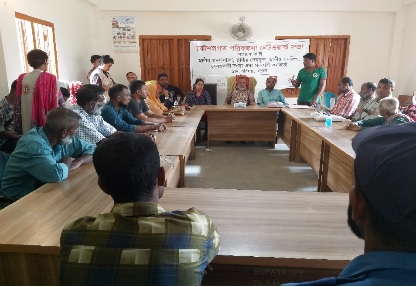
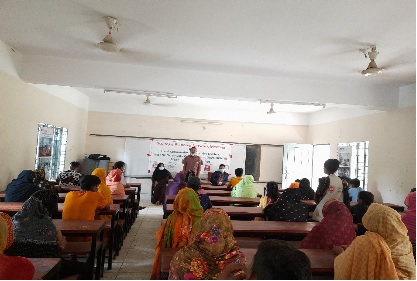

Workshop on Disaster Management and Emergency Health Program-Dhaka
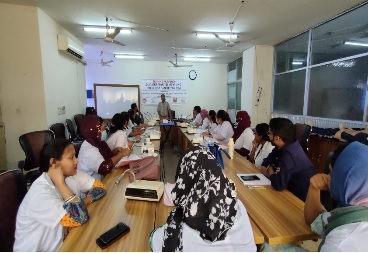

Workshop on Disaster Management and Emergency Health Program-Pabna


Local NGO Emergency Health Provider Training-Galachipa
